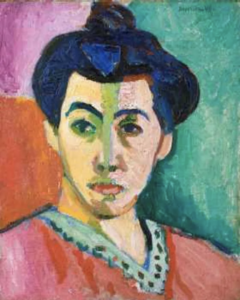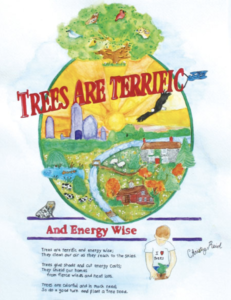Photo by Yetta Reid Photography
A mother recently messaged me saying that her five-year-old daughter loved painting. As a mother, she wanted to encourage her daughter in the arts and she asked me if I had any ideas of how to encourage and promote her five-year-olds artistic practice. To which I said, “I love that you want to do this for you daughter, oh I can fill a whole blog post with ideas for you!” In this post you will find, ideas, tools, and methods to encourage and foster your child’s inner artist.
For those of you who may not know my background story, I credit my mother as the reason I am a professional artist today. My mother, an art historian, stressed the importance of art history to us as children growing up, she taught us art history lessons, gave us practical advice, put us in art lessons and more. My mother, the tools, the history, and the confidence she gave me are all a major part of the reason I am where I am today. So even if you’re not an art historian like my mother, here are some practical things you can do to encourage, foster, and inspire your child in their artistic journey.
1. Educate Yourself as a Parent:
While not every parent is an art historian, there are so many ways to teach yourself some basic art history so you can pass some basic knowledge on to your child. Understanding the basics of art history and a general timeline of movements will inform your child’s creation as they grow. As an added bonus, it will make visiting museums a richer and more fulfilling experience if you have some basic knowledge of periods, movements, and specific artists in those periods. Here are some easy to understand books to educate yourself as a parent:
a. Gardner’s Art Through the Ages:
This is an amazing resource. Lots of great detail but still gives a great comprehensive overview of art history. A phenomenal place to start.
b. The Story of Art:
This is a shorter read but still gives you a good overview on the history of art.
c. Color Choices: Making Color Sense Out of Color Theory
This book will help you understand the nature and importance of color theory.
When you as a parent understand some of the basics, you’ll be able to instruct and answer your child’s questions. Here are some art history and art education books that you can use with your child:
a. Art: a Visual History
A really great holistic overview for children.
b. 13 artists Children Should Know
I remember this book as a child and it really stuck with me. I really remembered the content in this book, great for memorization.
c. 13 art movements Children should know
This will help your child understand movements and help then understand chronology and how one movement leads to another.
d. A child’s introduction to art
This is a great place to start with really little ones. They might not be able to understand artists, movements or techniquest yet, but this book will just introduce them to the ideas and some of the big players.
e. The Big Book of Color
I love this book! this book will introduce your child to understanding color theory and teach them that colors dont exist on their own. They are mixed from primaries and can change depending on how you manipulate them. A great color theory start for little ones!
There are so many good books and resources out there for you and your child, but here are some basic books to help you get started as a parent and child together learning some of the basics of art history and color theory.
2. Study Your Child:
Even though I am not a parent, I really remember how attentive my mom was to how I created and in which environments I worked best. My mom used art as a focusing technique for me as a child and she was able to see when I was the most creative. I am an auditory learner. My mom would often read books aloud to me, play books on tape, or play music for me while I was coloring and painting. She was able to recognize that when I was getting auditory stimulus I was able to focus super well and create for long periods of time uninterrupted. I am still like this to this day. If I’m listening to something I can spend 10 hours completely focused, uninterrupted painting or drawing, it’s almost like a trance for me. I also have synesthesia, so when I hear music, I see it as movements of colors.
Study your child, put them in different environments as they create and let them show you the places and ways they are most creative. Is it in the morning, afternoon, or evening? Do they like to work on the floor? Maybe laying on their stomach? Do they like to work standing up, tapping one foot and bouncing around? Do they like to be listening to something or do they need complete silence? Do they need to be working on a few different art projects at once or just one at a time? Let your child experiment with place, body position, and different outside stimuli and let them find the places that work best for them. Art doesn’t have to happen sitting down at a table or on an easel. I create and am happiest when I paint sitting on the floor, listening to music. As a child I would often lay on my stomach and draw while listening. Let your child create in a physical space that feeds their artistic practice.
3. Expose Your Child to Different Mediums:
The very first medium I remember working with as a child was watercolors at two-years-old. My mom used watercolors to teach me color theory because they are very simple and easy to clean up. This is the progression of mediums my mom used for us growing up, watercolors, oil pastels, acrylics, charcoal/pencil then finally oils when I was ten years old. While there are way more mediums and ways to create beyond those basics. It’s important to give your child mediums they can handle, at an age they can handle it. Watercolors are good for small children because they are easy to clean up, fun to use, and it gives them a basic understanding of mixing colors. Oil pastels can be used starting at probably at five or six years old with adult supervision. They are super fun to mix with your fingers and with pastels children can start to grasp what it means to layer colors and grasp a deeper understanding of tone and depth of tones. Acrylic paints are relatively safe starting at five or six years of age onward. Just make sure they are wearing clothes that you’re ok with being covered in paint. Oils are trickier and use harsh chemicals. My mom wouldn’t let me use oil paints till I was about ten years old. These paints can cause brain damage if not used with proper ventilation in addition to the use of turpentine and paint thinners necessary to clean the brushes and thin the paint. Oils are tricky to use and should not be used by young children.
Here are some resources and different mediums you can get for your children for their various stages of learning mediums.
a. Watercolors
c. Oil Pastels (can be used on any paper)
d. Acrylics (can be used on paper, canvas, wood, basically anything)
e. Oils
g. Canvases
h. Brushes
Overall, I would say, let your child experiment. If you take them to the craft store and they see other materials they can envision in their artwork, let them experiment with sewing on cotton balls, or embedding glass beads. Mixed media art is such a freeing and exciting way for children to create. Let them choose some of their mediums.
4. Give Your Child Some Basic Tools:
a. One of the very first and most important parts of being an artist is understanding color. The best tool you can give your young child is the knowledge and ability to create color and depth from primary colors. Give your child only primary colors (Red, Blue, Yellow) and black and white and have them recreate the color wheel. I paint from primary colors to this day with the exception of metallic paints. When they know how to manipulate and create depth, tones, undertones, they can create anything.
These color wheels will help you and your child understand color theory. As a fun game, have your child try and recreate each color on the color wheel starting only from primary colors.
b. As your child grows and as both of you understand art history a little better, have your child recreate different masterpieces as an exercise. My suggestion is to do this by movement. Start with either contemporary or modern artists and work your way back in history. Pick several artists from different periods and have your child try and recreate them. As you’re instructing your child recreate the masterpieces ask your child to pay attention to the color choices, point out the artists stokes and see if your child can mimic them. Talk about the subject matter of the painting and see if your child can start to recognize artists based on their color palettes, stroke, composition or subject matter. As your child grows they will be able to recognize an artist or movement based on their palette, stroke, subject matter.
The purpose of recreating masterpieces from art history is not for your child to become a copiest, but rather to expand your child’s mind in understanding what is possible through painting. Having them recreate masterpieces will show them the innumerable ways there are to create art. It will inform their own creativity as they grow and enable them to draw on innumerable techniques and ideas as they create their own masterpieces. My mom would often read to us aloud about the artist she was having us copy.
I’ll never forget when I was about seven years old, my mother was reading to us about Matisse. She was having us recreate The Green Stripe, also known as Portrait of Madame Matisse. As she was reading to us she said, “notice, her hair is blue, her face is green, obviously the woman wasn’t actually those colors in real life, but Matisse is playing with lighting and dimension in a creative way.” This forever changed the way I saw color and painting. A person didn’t have to have beige skin, hair didn’t have to be brown. It could be whatever color I wanted. I could show dimension, emotion, and reality in ways that were different than real life and it was not only ok, it could be amazing.
 Portrait of Madame Matisse by Henri Matisse
Portrait of Madame Matisse by Henri Matisse
5. Put Your Child in Art Lessons:
If you can afford it, put your child in art lessons. It is important that your child understands realism. It’s important to understand perspective and proportion. My mother put me in fine charcoal and pencil classes when I was about eight years old. I took classes for two years and in that time I created three finished works of art. Hyper-realistic portraits that showed me dimension, perspective, shadow, and scale. I really enjoyed these classes. If you can get your child into art classes to learn realistic technique it will only further expand their mind. When I was in middle school I took oil lessons from my grandfather who was a great oil painter.
6. Take Your Child to Museums:
Show them the value of art. My mom would take us to museums around the world while I was growing up and she was able to show us in person many of the masterpieces we studied in our art history books. Reading about an artist and their paintings and then seeing them in person is a transformative experience. It makes the history real, it makes the art and the artist more valuable when you see it in a big fancy museum. It brings history to life and changes the way a child sees art. Most towns, even small ones have museums, if you can’t go to a museum in a big city near you, try and take your child to galleries, let them see what valuable art looks like in person, teach them it has value.
7. Find Art Competitions for Your Child:
My mom was always finding competitions for us to enter our art in. As a way for us to measure our skill and force us to expose our art to the world. Every summer, my brother and I would enter our artistic creations into the local fair, we usually won first or second. When I was eleven-years-old, I entered the National Arbor Day Poster Contest and won first place out of 75,000 fifth graders across America. That contest was a pivotal moment in my life. I realized that maybe I had some talent and that it was possible to gain recognition for my art. For the first time in my life, I saw my art as having real value in the world. Here is a copy of my watercolor poster that beat out 75,000 other fifth graders in case you’d like to see, hahaha makes me laugh now.
Here is a list of some art competitions you could enter your child’s work into. But also check out your state and local fairs and enter your child’s art into the fair!
8. Show Off Your Child’s Artwork:
One of the biggest ego boosts to me as a child and a huge example of my mother’s love for me was how much she cherished and showed off my art in our home. My mom made a habit of professionally framing my paintings. The very first piece that she had framed was an impressionistic tulip I made when I was two-years-old. (I had in fact a whole tulip period in which I created hundreds of tulips using the same technique over and over but using different colors). That tulip painting, she still has framed in her office. She would take me with her to the framer and she would let me pick out the frame. It amazed me and humbled me as a child to see my mother spending (what seemed like to me a ton of money) framing my artwork. She not only had my works professionally framed, she would hang them on the wall next to artworks valuing thousands of dollars. As an adult, it makes me want to cry, knowing my mother valued my childhood paintings as much if not more than the professional art that donned her walls. It signaled to me that I was worthy and just as good of an artist as artwork she payed a lot of money for.
And if my painting wasn’t a masterpiece that was framed and put on the wall, it was put on the fridge, or in my mother’s filing cabinets or scrapbook. She saved almost everything and I noticed. Your child will notice too if you cherish, value, and place their artwork in places of honor.
In conclusion, there are so many things that you can do as a parent to encourage, foster, and help your child grow as an artist. Even if you can’t do all the things on this list like my unbelievably amazing mother did, maybe you can do a few, or find some other methods that work for you and your child. Tell me below if you have other ideas of how to foster your child’s inner artist.
If you enjoyed this post, please share it with your fellow parents and friends! Follow me on Instagram @christineolmstead Pinterest @christineolmstead Facebook @ceolmstead
This post may contain affiliate links. I may receive commissions for purchases made through links in this post. As an Amazon Associate I earn from qualifying purchases.




Comments
Can’t wait to art with my little people ! Great ideas Christine !
I love how this is so educational to me as a parent as well as how to teach my littles about art in the same breath. I have always loved the arts and found that when I am working on something, my littles are just as excited as I am about it. Thanks for sharing additional ways I can keep them interested!
I love this!! I’ve been looking for a resource on raising creative kiddos. My boys are showing some major signs of being little artists!! Thanks for sharing 💙
These are very helpful tips! Thank you
I loved reading this. I might read it over and over. Thank you for sharing how you appreciated my love for you and your work. I love your sculptures too! They are in my office also!! You are so beautiful!!!
I think this post was full of so much rich material for young mothers. Love you!
Thank you so much for great article…